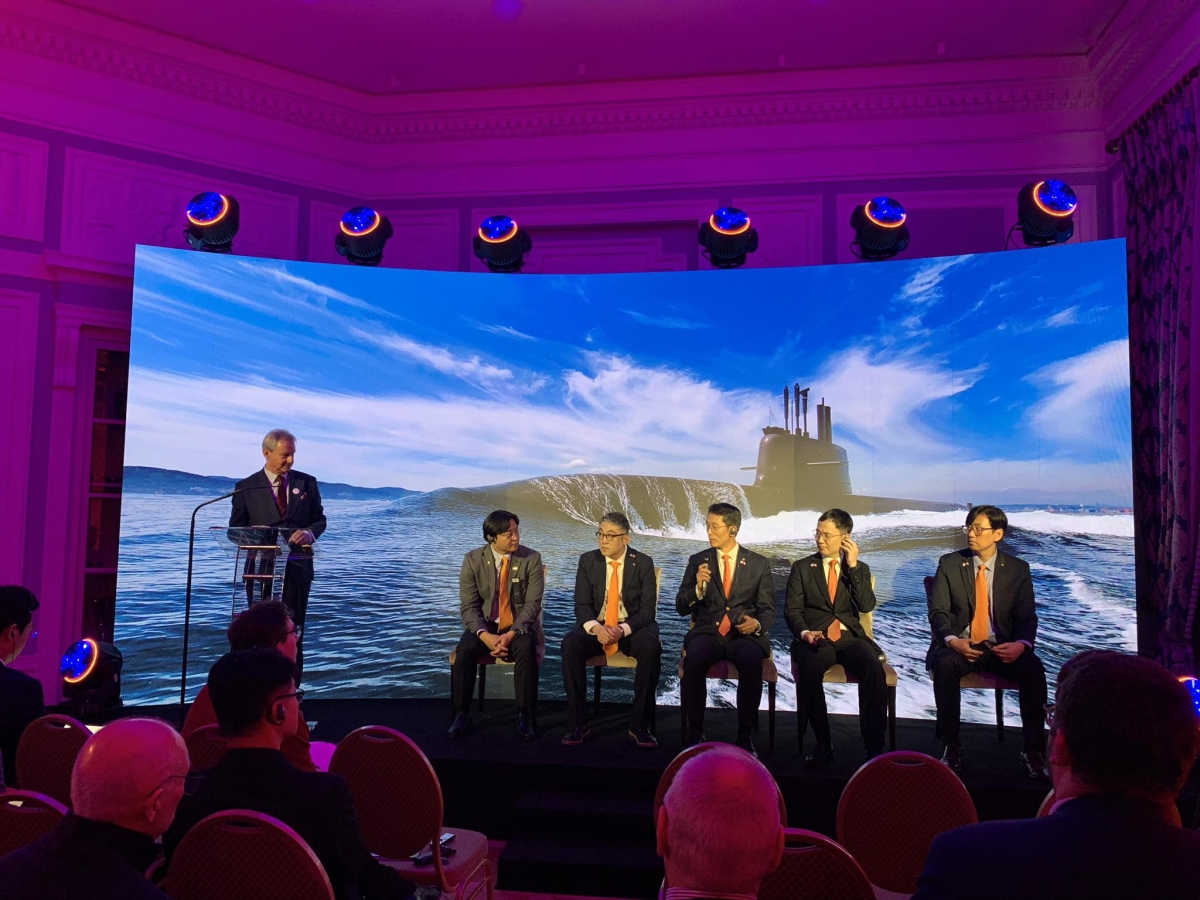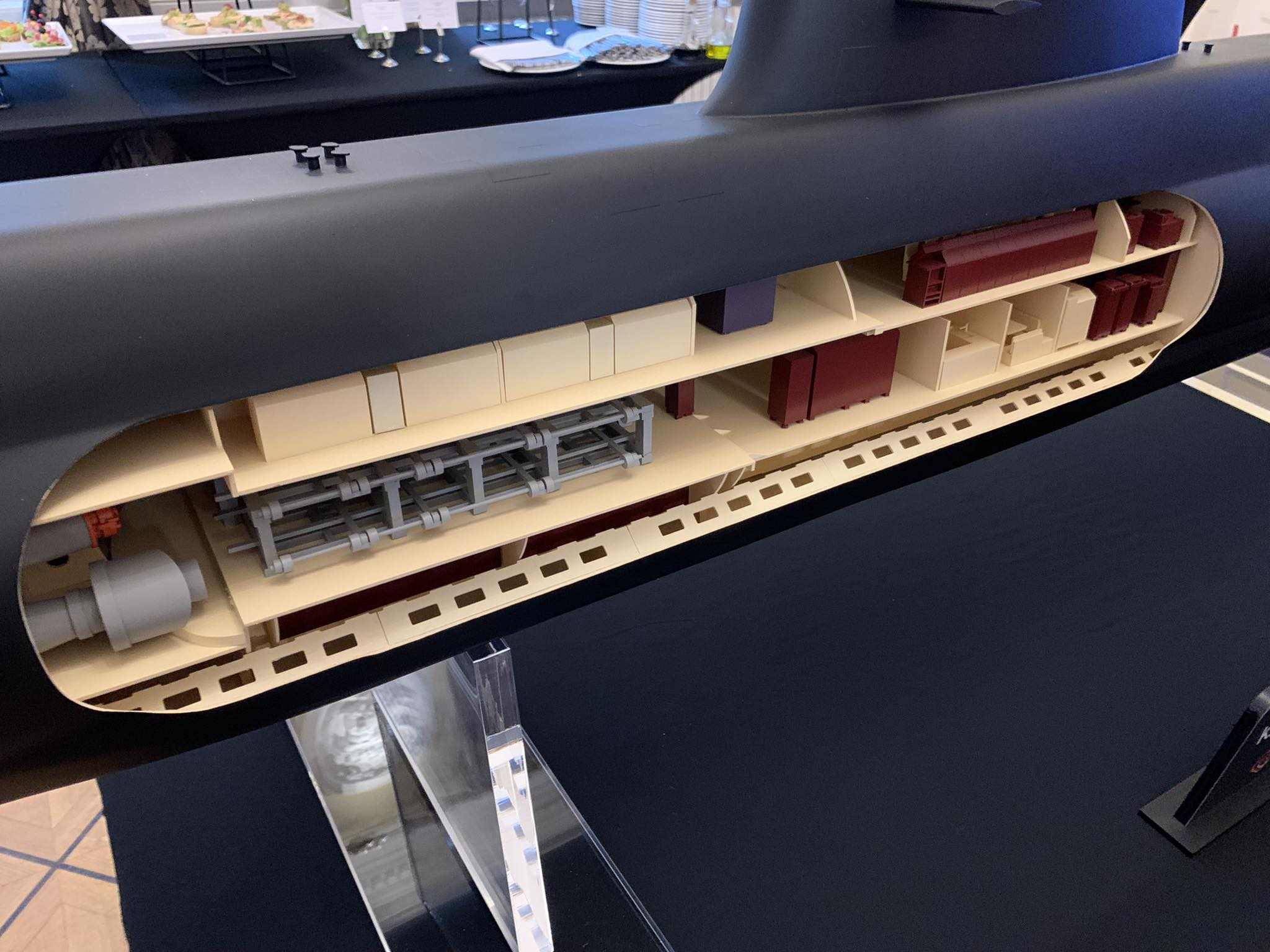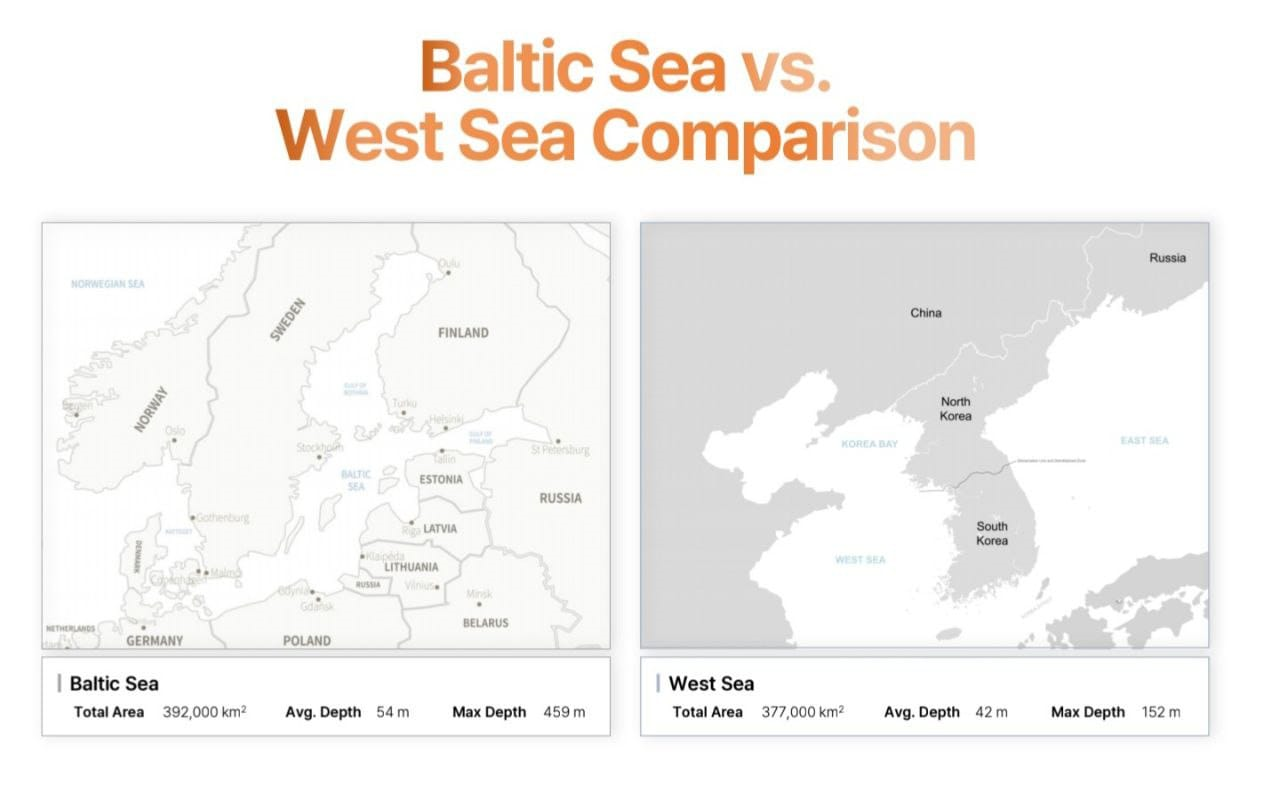
The main purpose of the event, which took place on November 29 at the Belloto Hotel in Warsaw, was to present the submarine currently going into the Korean Navy's equipment, the KSS-III Batch II variant. It is currently the most modern unit going to the Korean Navy's equipment, also representing proven solutions resulting from decades of shipbuilders' experience in building and delivering units of this class. The meeting addressed to journalists was also an opportunity to present the company's vision for the development of Polish-Korean industrial cooperation, which is expected to provide mutual benefits for the economy. It takes advantage here of the fact that a partnership between the two countries in the arms industry has been actively developed for several years. South Korea is currently the largest supplier of armaments to the Polish army. Shipments of K2 Black Panther tanks, K9 Thunder cannon howitzers, K239 Chunmoo rocket launchers and FA-50 combat aircraft are underway in batches.
Strategic partnership
The event began with a presentation of the company and its history, showing the entire range of activities within the Hanwha conglomerate. Hanwha Ocean, as its marine branch, presented its shipbuilding business, concerning both the supply of ships and vessels to ordering parties from around the world, also raising the issue of supporting green solutions in connection with the decarbonization of shipping.
"We wanted to introduce Hanwa Ocean to the Polish media and our submarine, which is one of the best in the world. We are interested in supporting the Polish Navy in building defense capabilities in the maritime environment. Meetings with the media are a great opportunity to present our offerings, strengthen relations and better understand the needs of Poland and its armed forces. In recent months, Korea has been investing heavily in the Polish market, building potential and opportunities to develop cooperation with both the domestic market and the authorities," stressed Sung Kyun Jeung, vice president and head of the Shipbuilding Division for International Business at Hanwha Ocean. He added that on this occasion, the company also wants to share its long-term vision for partnership with Poland.
"We are striving to establish a long-term relationship with Poland in the provision of defense systems in every domain, land, sea and air. Both countries are strengthening the partnership and we want to develop it successfully. I think this will mutually strengthen the economies of both Poland and Korea," added Jason Kim, head of the Shipbuilding Industry Marketing Team at Hanwha Ocean.
 Marine Poland
Marine Poland
Representatives of the company answered questions from journalists on the details of the way forward in the situation of the possibility of winning the tender. They suggested that the bid would be for, at initial talks, two KSS-III ships, although more are not ruled out. The first would be handed over in 2030, provided the tender is held next year and a winner is selected shortly thereafter. Hanwha Ocean also envisions providing comprehensive training programs for the Polish Navy, in cooperation with the Republic of Korea Navy (ROKN). This would include basic and specialized courses in submarine operations, training in equipment handling, tactical training using simulators and trainers, and training on board a ship at sea, under the guidance of Korean specialists from the South Korea naval forces. Further areas of support for the this navy also include support during sea trials, training in service and sharing needed knowledge with Polish sailors.
The crisis situation of the polish Submarine Squadron, part of the 3rd Submarine Flotilla, should be taken into account here. As of 2021, it has only the ORP Eagle, which has been serving since 1986, and which has recently been more often in overhaul than in regular service. If the first ship were to be handed over by 2030, naval personnel have to be continuously trained and underwater capabilities maintained until then, and this also takes time. In addition, any changes to the design, where building a ship from scratch would be tailored to Polish requirements, any changes during could prolong the work. In response to this question, Sung Kyung Jeong (who is also Vice Adm. Res. of the MW of Korea, having served many years on submarines), noted the importance of training, responding to a suggestion regarding forms of cadre creation and maintenance, where a bridging solution also comes into play. South Korea is preparing to retire the oldest KSS-I (Jang Bogo type) submarines in service.
Depending on how the contract with the Armaments Agency is signed, there is therefore an option that, within the framework of the purchase of new ships, Poland could also purchase or receive on deposit one of the older ships, but this would allow the continuity of training of officers and sailors in practice, in Polish waters. Significantly, the KSS-I units are based on the solutions of the German Type 209, which is a continuation of the line that also included proj. 207 (Kobben type) ships known to Poles. Creating a training infrastructure here would also mean developing cooperation with Polish shipyards, as well as with Polish Navy training centers, including the Polish Navy Training Center in Ustka and the Polish Naval Academy in Gdynia.
Since submarines can serve for up to 30-40 years, it is required to ensure that they can be maintained in continuous service, taking into account the need for overhaul, repair and modernization. Among other solutions to increase Poland's self-sufficiency in the operation of new ships, Hanwha Ocean plans to establish a maintenance, repair and overhaul (MRO) center in Poland, which would be done in cooperation with local shipbuilding companies and others. It should be taken into account that Polish shipyards must be prepared in terms of knowledge and infrastructure to work on these ships. To this end, Hanwha Ocean's representatives have already been doing reconnaissance of the country's infrastructure and opportunities for cooperation in both construction and supply chain. This center would not only provide technical support through a team of specialists located on site, but would also ensure, as promised, the timely delivery of spare parts, manage obsolescence prevention, and will offer extensive MRO expertise, enabling Poland to independently and effectively maintain the operational capability of these submarines throughout their lifetime.
Modern equipment
The KSS-III offered to Poland belongs to the Batch II sub-series referred to as the Dosan Ahn Changho type, which is 89 meters long and has an approximate 3,690-ton maximum displacement. A variant of the Batch-II has not yet been built, nevertheless some knowledge of its capabilities is to be provided by the earlier Batch-I. It is expected to reach a speed of 12 knots when surfaced and up to 20 when submerged, with a range of up to 10,000 nautical miles. The ship's autonomy is to be 20 days. The crew consists of 50 officers and sailors. Its propulsion is provided by three MTU 16V396SE84L diesel engines and Bumhan Industry PH1 PEM fuel cells, each with 150 kW of power. It uses a Hanwa-developed combat management system (CMS), a sonar suite developed by LIG Nex1, a sonar for detecting mines and other underwater objects from Thales, a radar electronic support measures (RESM) from Indra, a "Series 30" optoelectronic observation mast from Safran, a weapon handling and launching system (WHLS) from Babcock and control consoles developed from ECA Group. The Korean ships are armed with 10 Hyunmoo 4-4 submarine-launched ballistic missile (SLBM) and Chonryong submarine-launched cruise missile (SLCM). They can also be armed with anti-ship missiles, torpedoes and naval mines, although much also depends here on the expectations of the Polish side in terms of willingness to acquire specific armaments.
Hanwha Ocean is to deliver (working with Hyundai Heavy Industries shipyard) nine KSS-III series ships to the South Korean naval forces, with the first two delivered from the Batch-I sub-series as of 2021. The Batch-II offered to Poland is not yet in service, but nevertheless remains similar to the ships already built. Among the solutions of particular interest in them is the lithium-ion battery technology equipment developed by Samsung SDI and supplied by Hanwha Defense. Comparing them to the lead-acid batteries used to date, the new ones are expected to allow more efficient cruises without returning to port (lasting up to three weeks) in terms of both speed and endurance. So far, only Japan has equipped its Sōryū submarines with it. Although it's a conventional propulsion system, in terms of performance and compatibility with the idea of decarbonization it is expected to appear innovative, with an eye also to countries unwilling or unable to opt for nuclear-powered ships.
Another innovation is to be a state-of-the-art Air Independent Propulsion (AIP), which is also yet to be implemented on submarines. The KSS-III also has a hull designed to minimize noise emissions, allowing it to operate underwater while remaining undetected. Here, the experience of Anti-Submarine Warfare (ASW) exercises has also been taken into account, with Hanwha Ocean representatives assuring that the latest ships are effective during such maneuvers, so they can also introduce new solutions to enable the units to operate effectively undetected by the enemy. The integrated combat management system and sonar (both manufactured by Hanwha Defence) found in the units' equipment are additionally expected to contribute to their technological superiority, ensuring full interoperability with surface forces, securing the company's position as one of the leaders in maritime defense. Company representatives noted that they also took into account here expectations of compliance with Poland's NATO procedures and commitments, including in terms of equipment on the ships.
Participants in the meeting pointed out that some of the NSS-III equipment is being made in cooperation with foreign contractors. Thus, they raised the issue of realization of deliveries and availability of technology for Poland as well. According to Hanwha Ocean's representatives, their partnerships with these companies from Germany and the UK, among others, and the investments made so far prove their sustainability, and in the case of the "Orka", equipment like that for South Korean ships will also be found on Polish submarines.
Underwater capabilities
When there were suggestions that ships from Underwater Korea might emerge as an offer for the Polish Navy, experts and those interested in the subject raised the question of whether a ship of this size would be capable of operating in the Baltic Sea. Compared to the ships of other bidders, the Korean one would be the largest, more than 15 meters longer than the ORP Orzeł currently in service. Hence, there are questions as to whether this body of water would prove too shallow for them (also taking into account periscope depth and safe depth), making maneuverability difficult. On top of that, it would be easier to detect. In response, the Korean side showed a comparison of maps of the Baltic Sea and the Yellow Sea (referred to in South Korea as the West Sea), raising the topic of size and depth, where the Baltic turns out to be a larger and deeper sea. She also pointed out that submarines from both Korea, China, Russia and the US operate in such waters, sometimes even larger than the KSS-III. She also emphasized the experience of ZOP exercises, which they said are supposed to indicate that the size of the ships would not be a hassle to use. They also stressed that, because of international politics, the ships should also be capable of operating outside their home basin, pointing to the possibility of sending Polish ships to the North Sea and the Mediterranean, for example. Nonetheless, the bottom line for operations in the Baltic will remain a design challenge, important for Polish decision-makers when selecting the best offer.

Hanwa Ocean
Demonstration of capabilities
The KSS-III series ships are being presented as the most advanced submarine weapons solution Hanwha Ocean has to offer South Korea, as well as potential contracting parties from other countries. Here it seeks to advance maritime technology, contributing to improving international maritime security. In doing so, the company draws on its experience from ongoing deliveries to both its domestic customer and other countries. Since 2017, it has delivered three KSS-I (Indonesian Nagapasa type) ships, an example of sales and technology transfer abroad. Representatives of the company pointed out that the experience of those investments, including mistakes, is a source for new proposals to develop its offerings and take advantage of its strengths, including presenting them in Poland. The success of the tender would, in a way, become a doorway for the entire Hanwha Group to the European market and beyond, both in the shipbuilding industry and, for example, in the energy sector.
The success of the tender may also prove encouraging in terms of interest from the armed forces of a number of countries. Those in the Middle East, but also the Philippines and Canada are pointed to, thus highlighting the potential impact of the "Orka" on a global scale to increase interest in the bid. In this way, Hanwha Group, as well as its member Hanwha Ocean, show how seriously they are taking investment in Poland. Hence, there are suggestions that the South Korean bid may turn out to be the "black horse" of the tender, also serving to develop public interest in the importance of underwater weapons for the state security


